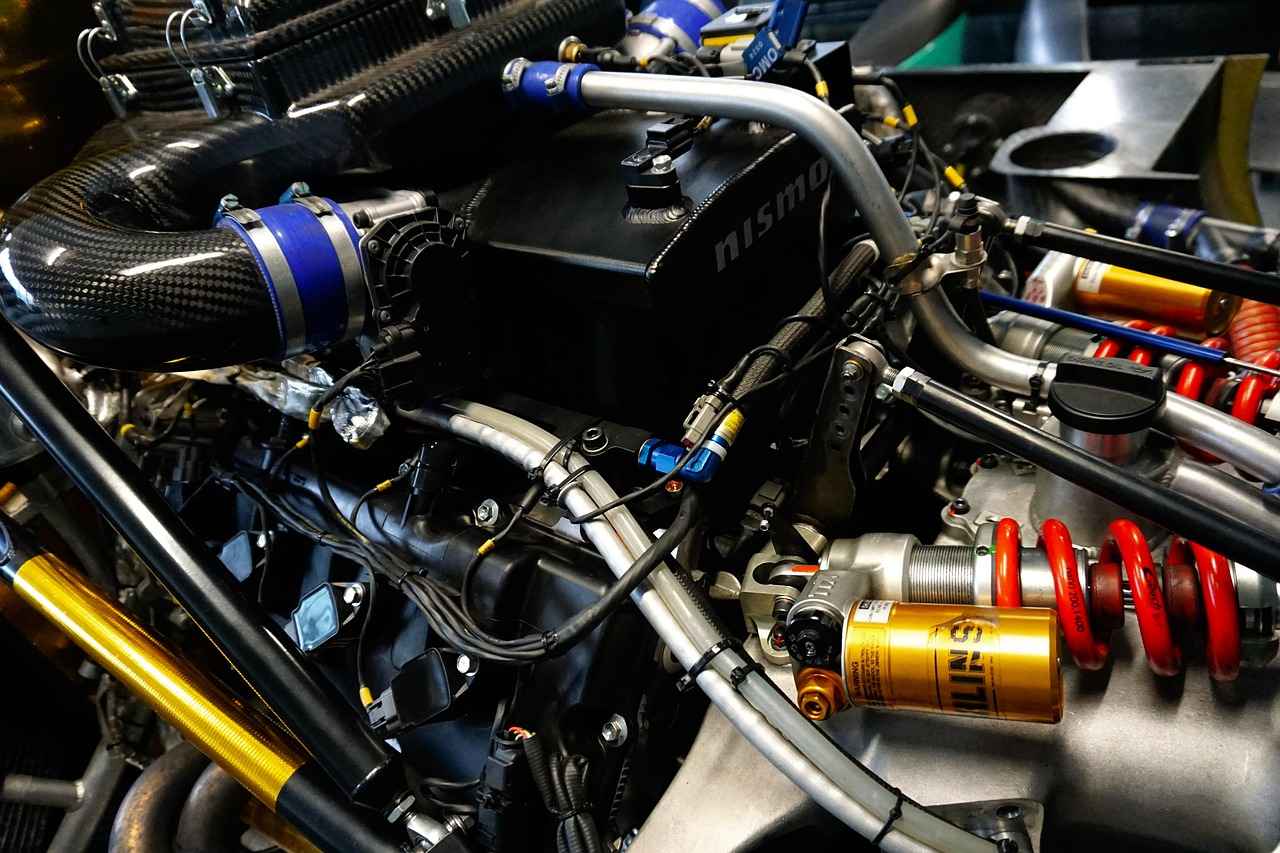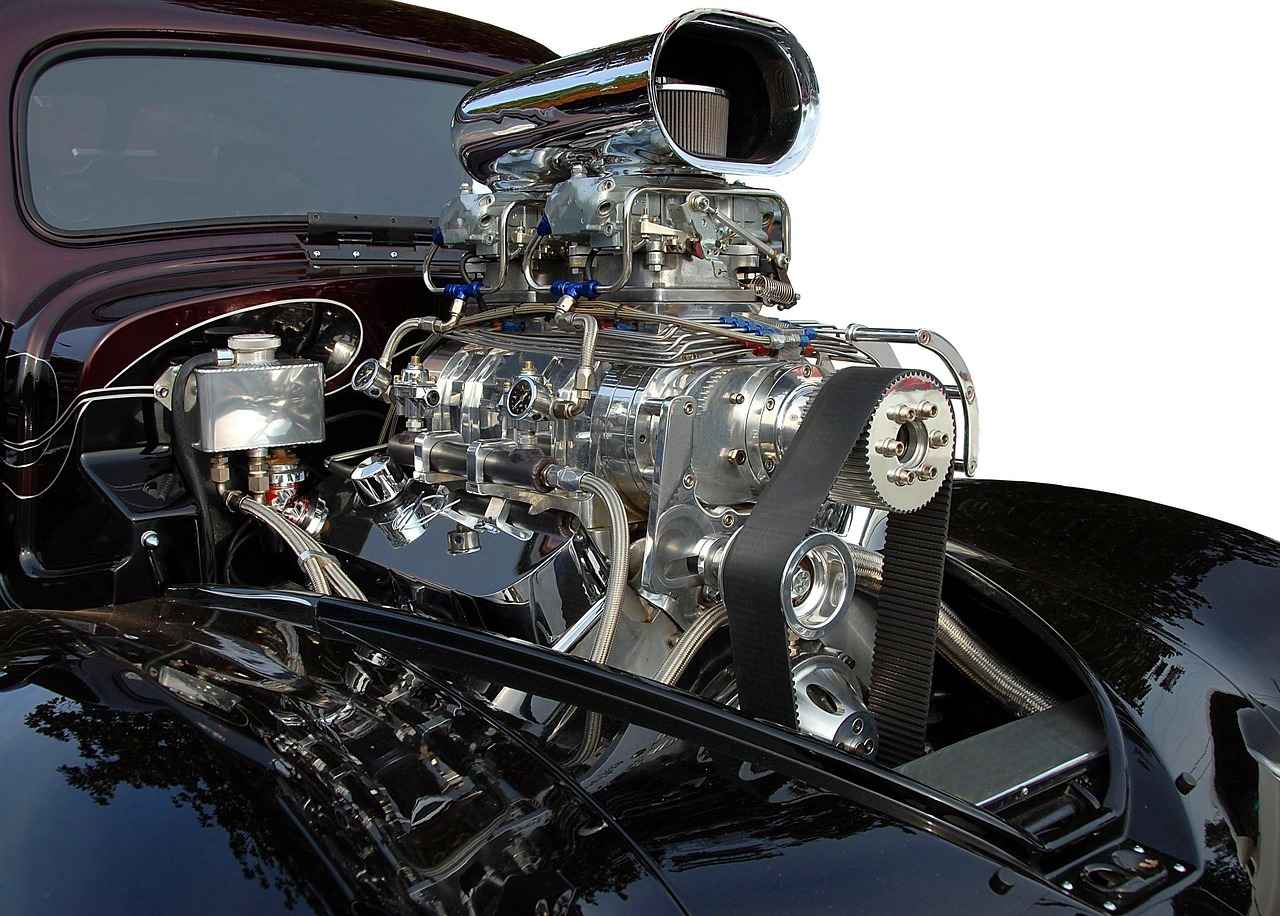Detailing an engine bay is a rewarding task for car enthusiasts, enhancing not only the vehicle’s appearance but also its performance. However, one common question arises: How long does it take to detail an engine bay? The time required can vary significantly based on several factors, and this article aims to provide insights, estimates, and practical tips for those looking to embark on this detailing journey.
Several variables can affect the time it takes to detail an engine bay:
- Condition of the Engine Bay: A heavily soiled engine bay will require more time than one that is regularly maintained.
- Type of Detailing: Basic cleaning versus deep cleaning will have different time commitments.
- Experience Level: More experienced detailers may work faster than novices.
- Tools and Products Used: Having the right tools can streamline the process significantly.
Preparation is crucial for achieving optimal results. Here’s how to get ready:
- Gather the Right Tools: Ensure you have all necessary tools, including brushes, microfiber cloths, and a vacuum.
- Choose Appropriate Cleaning Products: Select products that are safe for your engine’s materials.
- Safety Precautions: Always wear gloves and goggles to protect yourself from chemicals and debris.
Detailing an engine bay involves several systematic steps:
- Initial Inspection: Assess the condition of the engine bay and identify areas that need special attention.
- Degreasing: Apply a degreaser to loosen dirt and grime.
- Washing: Use a gentle stream of water to rinse off the degreaser, being cautious of electrical components.
- Drying: Thoroughly dry the engine bay to prevent water spots.
- Detailing: Use brushes and cloths to clean surfaces and apply protectants.
The time commitment for engine bay detailing can vary:
A basic clean can usually be completed in about 1 to 2 hours. This includes a light wash and quick wipe-down of surfaces.
For a thorough deep clean, expect to spend around 3 to 4 hours. This process involves detailed cleaning of all components and may include polishing and applying protectants.
Maintaining a clean engine bay offers numerous advantages:
- Enhanced Performance: A clean engine operates more efficiently, potentially improving fuel economy.
- Increased Longevity: Regular cleaning can help prevent corrosion and other damage, extending the life of engine components.
- Higher Resale Value: A well-maintained engine bay can significantly boost your car’s resale value, making it more appealing to potential buyers.
In conclusion, understanding the time and effort required for engine bay detailing can help car enthusiasts achieve better results and enjoy the process. With proper preparation, the right tools, and a systematic approach, detailing your engine bay can be a fulfilling and beneficial task.

What Factors Influence Engine Bay Detailing Time?
Detailing an engine bay is an essential aspect of vehicle maintenance that not only enhances aesthetics but also promotes longevity and performance. However, the time it takes to complete this task can vary significantly based on several factors. Understanding these variables is crucial for setting realistic expectations and improving efficiency during the detailing process.
- Type of Vehicle: The size and design of the engine bay can greatly influence the time required for detailing. Larger vehicles or those with complex engine layouts may take longer to clean thoroughly.
- Level of Dirt and Grime: A heavily soiled engine bay will naturally require more time to clean than one that has been maintained regularly. Accumulated dirt, grease, and debris can necessitate deeper cleaning techniques.
- Detailing Techniques: The methods employed during detailing can also impact time. For instance, using steam cleaning might take longer than a simple wipe-down but can yield better results.
- Tools and Products: The efficiency of the tools and cleaning products used can either speed up or slow down the process. High-quality, specialized products can facilitate quicker cleaning.
- Experience Level: A seasoned detailer will likely complete the job faster than a novice. Familiarity with the engine bay components and effective cleaning techniques can significantly reduce the time spent.
- Environmental Conditions: Weather conditions can also play a role. For example, working in a hot environment might make certain cleaning products dry too quickly, necessitating reapplication and extending the time required.
By taking these factors into account, car enthusiasts can better gauge how long they should allocate for engine bay detailing. It’s advisable to plan for variations in time based on the specific circumstances surrounding each detailing session.
In summary, understanding the intricacies involved in engine bay detailing can lead to more efficient practices and ultimately result in a cleaner, better-performing vehicle. By assessing the factors that influence detailing time, you can approach the task with realistic expectations and a well-prepared mindset.

How to Prepare for Engine Bay Detailing?
Preparation is key to a successful engine bay detailing. Taking the time to prepare properly can make a significant difference in the outcome of your detailing efforts. This section covers the necessary steps to take before starting the detailing process to ensure optimal results.
- Assess the Condition of Your Engine Bay: Before diving into the cleaning process, take a moment to inspect your engine bay. Look for areas that may require extra attention, such as grease buildup, dirt accumulation, or rust spots. Identifying these problem areas will help you tailor your cleaning approach.
- Gather the Right Tools and Cleaning Products: Having the right tools and products at your disposal is essential for effective detailing. Consider including the following in your toolkit:
| Tool/Product | Purpose |
|---|---|
| Degreaser | To break down grease and grime |
| Soft Brushes | For scrubbing hard-to-reach areas |
| Microfiber Cloths | For drying and polishing surfaces |
| Protective Spray | To protect surfaces post-cleaning |
- Ensure Safety Precautions: Safety should always be your top priority when working on your vehicle. Here are some safety measures to consider:
- Disconnect the battery to prevent electrical issues.
- Allow the engine to cool completely to avoid burns.
- Wear gloves and safety goggles to protect your skin and eyes.
- Prepare the Work Area: Choose a well-ventilated area to work in. If possible, use a garage or shaded space to protect your vehicle from direct sunlight, which can cause cleaning products to dry too quickly and lead to streaking.
- Cover Sensitive Components: To avoid damage, cover sensitive parts such as the air intake, electrical connections, and exposed filters with plastic bags or aluminum foil. This will help keep them safe from water and cleaning products during the detailing process.
By following these preparation steps, you can set the stage for a successful engine bay detailing experience. Taking the time to gather the right tools, assess your engine’s condition, and ensure safety will lead to a more efficient and effective detailing process. Remember, a clean engine bay not only enhances the appearance of your vehicle but also contributes to its overall performance and longevity.
Gathering the Right Tools and Products
When it comes to detailing an engine bay, is essential for achieving a thorough clean without inflicting any damage. The engine bay is a complex area filled with various components, and using inappropriate cleaning agents or tools can lead to costly repairs. In this section, we will explore the critical aspects of selecting the appropriate cleaning products and tools for engine bay detailing.
Choosing the right cleaning products is vital for several reasons:
- Surface Compatibility: Different materials in the engine bay, such as plastic, metal, and rubber, require specific cleaning agents to avoid deterioration.
- Effectiveness: The right product will effectively remove grime, oil, and dirt without leaving residues that can attract more dirt.
- Safety: Some cleaning agents can be hazardous to your health or the environment. Selecting safer alternatives is crucial.
Here are some of the most effective cleaning products to consider:
- Degreasers: Look for a biodegradable degreaser that can cut through grease and oil without damaging sensitive components.
- All-Purpose Cleaners: A gentle, non-toxic all-purpose cleaner is ideal for general cleaning tasks.
- Detailing Brushes: Soft-bristled brushes can help reach tight spaces and corners without scratching surfaces.
- Microfiber Towels: These are perfect for drying and polishing surfaces, ensuring a streak-free finish.
- Protectants: After cleaning, applying a protectant can help shield surfaces from dirt and grime buildup.
Using the right tools can significantly enhance your efficiency and effectiveness during the detailing process:
- Pressure Washer: A pressure washer can quickly remove stubborn dirt and debris, but be cautious with the pressure settings to avoid damaging components.
- Foam Cannon: This tool can help apply soap evenly and effectively, allowing for better cleaning results.
- Detailing Brushes: Invest in a variety of sizes to tackle different areas, including hard-to-reach spots.
- Vacuum Cleaner: A shop vacuum with attachments can help remove loose dirt and debris from the engine bay.
To ensure the best results, consider the following best practices:
- Test First: Always test new products on a small, inconspicuous area to ensure compatibility.
- Read Instructions: Follow the manufacturer’s instructions for each product to maximize effectiveness and safety.
- Work in Sections: Break the engine bay into sections to manage your cleaning process better and ensure thoroughness.
- Rinse Thoroughly: After applying cleaning products, ensure you rinse thoroughly to avoid any residue buildup.
By carefully selecting the right cleaning products and tools, you can effectively detail your engine bay while preserving its integrity. Remember to prioritize safety and compatibility to achieve the best results.
Essential Cleaning Products for Engine Bay Detailing
When it comes to maintaining your vehicle, engine bay detailing is often overlooked. However, using the right cleaning products is essential for achieving optimal results while ensuring that no damage occurs to sensitive components. This section will explore the essential cleaning products that are best suited for various surfaces within the engine bay.
Using appropriate cleaning agents not only enhances the appearance of your engine bay but also contributes to the longevity of the components. Many products contain harsh chemicals that can lead to corrosion or damage if misapplied. Therefore, selecting safe and effective cleaning products is crucial.
- Degreasers: For removing grease and grime, a non-corrosive degreaser is essential. Look for products that are biodegradable and safe for use on rubber and plastic surfaces. Brands like Simple Green and Gunk are popular choices.
- All-Purpose Cleaners: An all-purpose cleaner is versatile and can be used on various surfaces, including metal, plastic, and rubber. Ensure it is safe for automotive use, such as Meguiar’s Super Degreaser.
- Wheel Cleaners: If your engine bay has alloy components, a dedicated wheel cleaner can help maintain their shine. Products like Sonax Wheel Cleaner are designed to remove dirt without damaging the finish.
- Protectants: After cleaning, applying a protectant can help shield surfaces from dirt and grime buildup. Look for silicone-free options like 303 Aerospace Protectant for a non-greasy finish.
- Detailing Brushes: While not a cleaning product per se, using detailing brushes can help apply cleaners effectively, especially in tight spaces. A set of soft-bristled brushes will prevent scratching delicate surfaces.
When detailing your engine bay, it’s crucial to be cautious around sensitive areas such as electrical components and sensors. Using a gentle touch and avoiding direct application of cleaners can prevent damage. Instead, consider using a damp cloth with a mild cleaner for these areas.
For environmentally conscious car enthusiasts, there are eco-friendly cleaning products available. Brands like Eco Touch and Green Clean offer biodegradable options that are safe for both your vehicle and the environment.
When selecting cleaning products, consider the following:
- Surface Compatibility: Ensure the product is suitable for the specific materials in your engine bay.
- Biodegradability: Opt for products that are eco-friendly to minimize environmental impact.
- Safety: Check for non-toxic labels, especially if you have pets or children.
By carefully selecting the right cleaning agents, you can achieve a clean and well-maintained engine bay without risking damage to its components. This proactive approach not only enhances the aesthetics of your vehicle but also contributes to its performance and longevity.
Tools That Make Engine Bay Detailing Easier
When it comes to engine bay detailing, having the right tools can make all the difference. Not only do they help achieve a thorough clean, but they also significantly reduce the time spent on the task. Below, we will explore the essential tools that every car enthusiast should consider incorporating into their detailing routine.
Using appropriate tools ensures that you can clean your engine bay effectively without causing any damage. The right tools not only enhance efficiency but also contribute to achieving a professional finish. Here are some of the most effective tools:
- Detailing Brushes: These brushes come in various sizes and shapes, making it easy to reach tight spaces and remove dirt without scratching surfaces.
- Microfiber Towels: Soft and absorbent, microfiber towels are perfect for drying and buffing surfaces, ensuring a streak-free finish.
- Pressure Washer: A pressure washer can effectively remove grime and dirt from the engine bay, saving you time and effort.
- Vacuum Cleaner: A wet/dry vacuum is essential for removing debris from crevices and hard-to-reach areas in the engine compartment.
- Steam Cleaner: For a deep clean, a steam cleaner can help dissolve grease and grime, making it easier to wipe away contaminants.
In addition to tools, the right cleaning products are crucial for effective detailing. Here are some recommended products:
- Degreasers: A high-quality degreaser helps break down tough grease and oil, making it easier to clean surfaces.
- All-Purpose Cleaners: These versatile cleaners can be used on various surfaces, ensuring a comprehensive clean.
- Protectants: After cleaning, applying a protectant can help shield surfaces from future dirt and grime buildup.
When detailing your engine bay, safety should always be a priority. Consider using the following safety gear:
- Gloves: Protect your hands from harsh chemicals and grime.
- Safety Goggles: Safeguard your eyes from splashes and debris.
- Face Mask: A mask can help filter out fumes and dust particles.
To maximize efficiency during your detailing session, keep these tips in mind:
- Organize Your Tools: Keep your tools and products organized to avoid wasting time searching for items.
- Work in Sections: Tackle one section of the engine bay at a time to ensure thorough cleaning.
- Follow a Routine: Establish a consistent routine for detailing to streamline the process.
By investing in the right tools and cleaning products, you can transform your engine bay detailing experience. Not only will you save time, but you will also achieve a level of cleanliness that enhances your vehicle’s overall appearance and performance.
Safety Precautions to Consider
Safety is paramount when working in the engine bay. Before diving into the detailing process, it is crucial to take necessary precautions to ensure both personal safety and the protection of your vehicle. This subsection outlines several important safety measures to consider before starting your engine bay detailing.
- Disconnect the Battery: Always begin by disconnecting the negative terminal of the battery. This prevents any accidental electrical shorts or shocks while working around sensitive components.
- Allow the Engine to Cool: Ensure that the engine is completely cool before starting the detailing process. Working on a hot engine can lead to burns and damage to plastic components.
- Wear Protective Gear: Equip yourself with the right protective gear, including gloves and safety goggles. This will help shield you from harmful chemicals and debris that may be present in the engine bay.
- Use Non-Toxic Cleaning Products: Opt for biodegradable and non-toxic cleaning solutions. This not only protects your health but also minimizes environmental impact.
- Cover Sensitive Components: Use plastic bags or wraps to cover sensitive electrical components, air intakes, and exposed wiring. This prevents moisture damage and ensures that cleaning agents do not harm these parts.
- Work in a Well-Ventilated Area: Ensure that you are working in a space with good airflow. This helps to dissipate fumes from cleaning products and reduces inhalation risks.
- Keep a Fire Extinguisher Handy: Having a fire extinguisher nearby is essential, especially when working with flammable materials. Be prepared for any emergencies that may arise.
- Read Product Labels: Always read the labels of cleaning products to understand their usage and potential hazards. This knowledge can prevent accidents and injuries.
By adhering to these safety precautions, you can enjoy a safer detailing experience. Remember, taking the time to prepare adequately not only protects you but also ensures that your engine bay detailing is effective and thorough. Following these guidelines will help you achieve the best results while maintaining a safe working environment.
In summary, prioritizing safety is essential in engine bay detailing. By implementing these safety measures, you can protect yourself and your vehicle, paving the way for a successful and rewarding detailing experience.

What Are the Steps Involved in Engine Bay Detailing?
Detailing an engine bay is a meticulous process that requires attention to detail and the right techniques. The engine bay is often overlooked when it comes to vehicle maintenance, yet it plays a crucial role in both aesthetics and functionality. By following a systematic approach, you can ensure that your engine bay is not only clean but also well-maintained. Below, we outline the steps involved in engine bay detailing to help you achieve optimal results.
Detailing an engine bay involves several key steps that contribute to a thorough clean. Each step is essential to ensure that the engine compartment is not only visually appealing but also free from debris that could affect performance. Here is a breakdown of the process:
- Preparation: Before starting, gather all necessary tools and cleaning products. This includes a soft brush, microfiber cloths, degreasers, and protective sprays. Make sure the engine is cool to avoid burns.
- Removing Debris: Begin by removing any loose debris, such as leaves and dirt. A vacuum with a narrow attachment can be useful for reaching tight spaces.
- Applying Degreaser: Spray a degreaser on the surfaces of the engine bay. Focus on areas with heavy grime buildup. Allow it to sit for a few minutes to break down the grease.
- Scrubbing: Use a soft brush to scrub away the degreased areas gently. Be careful around sensitive components like electrical connections and hoses.
- Rinsing: Rinse the engine bay with low-pressure water. Avoid high-pressure hoses, as they can force water into sensitive areas. Ensure that all degreaser is washed away.
- Drying: Use microfiber towels to dry the engine bay thoroughly. Pay special attention to crevices to prevent water spots and corrosion.
- Applying Protectants: Once dry, apply a protectant to rubber and plastic components. This will help prevent cracking and fading over time.
- Final Inspection: Conduct a thorough inspection of the engine bay to ensure that no areas were missed. This is also a good time to check fluid levels and look for any signs of leaks.
By following these steps, you can achieve a clean and well-maintained engine bay that not only looks good but also functions optimally. Regular detailing can enhance performance and prolong the life of your vehicle.
Common Mistakes to Avoid During Engine Bay Detailing
- Using Harsh Chemicals: Avoid using abrasive cleaners that can damage sensitive components.
- Neglecting Safety Precautions: Always wear gloves and eye protection to prevent injury from chemicals and debris.
- Overlooking Electrical Components: Be cautious around wiring and electrical connections to avoid shorts or damage.
By adhering to these guidelines and avoiding common mistakes, you will not only enhance the appearance of your engine bay but also contribute to its overall health and longevity.
Step-by-Step Detailing Process
Detailing an engine bay is an essential part of vehicle maintenance that not only enhances the aesthetic appeal of your car but also contributes to its overall performance. Following a structured approach makes engine bay detailing more efficient. Here, we outline the steps to ensure no detail is overlooked, allowing car enthusiasts to achieve the best results.
Before diving into the detailing process, it’s crucial to prepare adequately. This includes gathering all necessary tools and products, as well as ensuring that the engine is cool to avoid burns or damage.
- Ensure the engine is cool.
- Disconnect the battery to prevent electrical issues.
- Cover sensitive components with plastic bags.
Start with a thorough initial clean to remove loose dirt and debris. Use a vacuum cleaner with a nozzle attachment to reach tight spaces. A soft brush can help dislodge dirt from crevices.
Apply a suitable engine degreaser to the surfaces. Make sure to choose a product that is safe for your engine’s materials. Allow it to sit for a few minutes to break down grease and grime.
Using a soft-bristled brush, scrub the engine bay gently. Pay particular attention to areas with heavy buildup. This step is critical for achieving a deep clean.
After scrubbing, rinse the engine bay with a light spray of water. Avoid using a high-pressure washer, as this can damage sensitive components. Ensure that all cleaning products are thoroughly washed away.
Use microfiber towels to dry the engine bay. This prevents water spots and helps to remove any remaining debris. Make sure to dry areas that are prone to rust.
To give your engine bay a finished look, apply a plastic or rubber dressing. This will enhance the appearance of hoses and plastic components while providing some protection against UV rays.
While detailing, it’s easy to make mistakes that can lead to undesirable outcomes. Here are some common pitfalls to avoid:
- Using harsh chemicals that can damage engine components.
- Neglecting to cover sensitive electronics.
- Skipping the drying step, which can lead to rust.
By following these detailed steps, you can ensure a thorough and effective engine bay detailing process. This not only enhances the look of your vehicle but also contributes to its longevity and performance.
Common Mistakes to Avoid During Detailing
Detailing your engine bay can significantly enhance the overall appearance of your vehicle, but it is essential to approach this task with care. Avoiding common pitfalls can save time and prevent damage. This section delves into frequent mistakes made during engine bay detailing and how to steer clear of them, ensuring a successful and efficient process.
When detailing an engine bay, the stakes are high. A simple oversight can lead to costly repairs, safety hazards, or a less-than-stellar finish. Understanding common mistakes is crucial for every car enthusiast. Here are some of the frequent errors and how to avoid them:
- Neglecting to Disconnect the Battery: One of the most critical steps is disconnecting the battery before starting. This prevents any electrical shorts or damage to sensitive components.
- Using Harsh Chemicals: Many car owners mistakenly use strong chemicals that can damage plastic, rubber, or painted surfaces. Always opt for engine-safe cleaners that are specifically designed for automotive use.
- Over-Saturating Components: Applying too much water or cleaner can lead to pooling in sensitive areas, potentially damaging electrical connections. Use a light mist rather than soaking the engine bay.
- Ignoring Safety Gear: Failing to wear protective gear such as gloves and goggles can expose you to harmful chemicals and debris. Always prioritize personal safety during the detailing process.
- Skipping the Drying Process: After cleaning, it’s essential to dry the engine bay thoroughly. Leaving moisture can lead to rust and corrosion over time. Use a microfiber towel for effective drying.
- Not Protecting Sensitive Areas: Covering sensitive components with plastic bags or aluminum foil can prevent water and cleaner from causing damage. Be proactive in protecting your engine’s vital parts.
- Using Improper Tools: The wrong brushes or cloths can scratch surfaces or leave lint behind. Invest in quality detailing tools that are safe for your engine bay.
- Forgetting to Inspect After Cleaning: After detailing, it’s a good practice to inspect your work. Look for any missed spots or potential issues that may need addressing.
To achieve a successful detailing job, consider implementing the following tips:
- Plan Ahead: Allocate sufficient time for the task, as rushing can lead to mistakes.
- Research Products: Invest time in finding the best products for your specific engine type and materials.
- Follow a Systematic Approach: Work methodically from top to bottom to ensure no area is overlooked.
By being aware of these common mistakes and taking preventive measures, you can enjoy a clean and well-maintained engine bay. Remember, attention to detail is key in achieving a professional finish and preserving the integrity of your vehicle.

How Long Should You Expect to Spend on Engine Bay Detailing?
When it comes to detailing an engine bay, time estimates can vary significantly due to several factors. Understanding these factors is essential for car enthusiasts who want to achieve optimal results while managing their time effectively. This section delves into the realistic timeframes you can expect for various types of detailing jobs.
What Factors Affect the Time Required for Engine Bay Detailing?
- Condition of the Engine Bay: A heavily soiled engine bay will require more time than one that is regularly maintained.
- Type of Detailing: Basic cleaning will take less time compared to a deep cleaning or restoration process.
- Experience Level: An experienced detailer may complete the job faster than a novice.
- Tools and Products Used: The right tools can streamline the process, reducing the overall time spent.
Time Estimates for Basic Cleaning
A quick engine bay clean typically takes between 30 minutes to 1 hour. This process generally includes:
- Removing loose debris and dust
- Wiping down surfaces with a microfiber cloth
- Applying a degreaser to the most visible areas
This timeframe is ideal for those who want to maintain a clean appearance without getting into the nitty-gritty details.
Time Estimates for Deep Cleaning
If you’re looking to perform a comprehensive cleaning, expect to invest around 2 to 4 hours. This more detailed process involves:
- Removing components for better access
- Using specialized cleaning products for various materials
- Thoroughly rinsing and drying the engine bay
- Applying protectants to plastic and rubber parts
Deep cleaning not only enhances the visual appeal but also helps in maintaining the engine’s performance.
What Are the Benefits of Efficient Engine Bay Detailing?
Investing time in engine bay detailing can yield numerous benefits. Regular maintenance not only keeps your engine looking pristine but also ensures:
- Improved Performance: A clean engine runs more efficiently and can lead to better fuel economy.
- Increased Longevity: Regular cleaning can help prevent rust and corrosion, extending the life of engine components.
- Enhanced Resale Value: A well-maintained engine bay can significantly boost your car’s appeal to potential buyers.
In conclusion, while the time required for engine bay detailing can vary, understanding the factors influencing this timeframe can help set realistic expectations. Whether you’re performing a quick clean or a deep dive into detailing, the benefits of maintaining a clean engine bay are undeniable. By investing the appropriate amount of time and effort, you can enhance both the performance and aesthetic appeal of your vehicle.
Time Estimates for Basic Cleaning
When it comes to detailing an engine bay, time management is crucial, especially for car enthusiasts who want to maintain their vehicles in pristine condition without spending an entire day on the task. This section focuses on the , providing a clear understanding of what to expect when undertaking such a project.
A basic clean of the engine bay can typically be completed in 30 to 60 minutes. This timeframe can vary based on several factors such as the level of dirt, the type of vehicle, and the experience of the person performing the cleaning. For instance, a well-maintained engine bay may require less time compared to one that has accumulated grime over the years.
Understanding the steps involved in a basic engine bay clean can help you estimate the time required more accurately. Here are the primary tasks:
- Initial Inspection: Spend about 5 minutes checking for any obvious issues, such as leaks or loose wires.
- Dusting and Debris Removal: Use a soft brush or compressed air to remove loose dirt and debris, which may take around 10 to 15 minutes.
- Cleaning Surfaces: Applying a degreaser and wiping down surfaces can take about 15 to 20 minutes. Focus on areas like the hood, fenders, and any visible components.
- Rinsing: If necessary, a light rinse with water can be done in 5 minutes, ensuring that no water gets into sensitive electrical components.
- Drying: Use a microfiber cloth to dry off surfaces, which may take another 5 to 10 minutes.
Several factors can influence the time it takes to complete a basic engine bay clean:
- Condition of the Engine Bay: A cleaner engine bay will naturally require less time to detail.
- Experience Level: More experienced individuals may work faster and more efficiently.
- Tools and Products Used: Having the right tools and quality cleaning products can speed up the process.
To make the most of your time during a basic engine bay clean, consider the following tips:
- Prepare Your Tools: Gather all necessary tools and products beforehand to avoid wasting time searching for them.
- Work Systematically: Follow a structured approach, starting from one side of the engine bay and moving to the other.
- Stay Focused: Minimize distractions to maintain your efficiency throughout the cleaning process.
In conclusion, a basic engine bay clean can be a quick yet rewarding task, taking approximately 30 to 60 minutes. By understanding the steps involved and utilizing efficient techniques, you can enhance your vehicle’s appearance while also ensuring that it remains in optimal condition.
Time Estimates for Deep Cleaning
When it comes to detailing an engine bay, understanding the time investment required for a deep clean is essential for car enthusiasts. Unlike basic cleaning, which can be completed relatively quickly, a thorough engine bay cleaning demands more attention and effort. This article provides a detailed breakdown of the time estimates involved in deep cleaning an engine bay, ensuring you know what to expect.
A deep clean of the engine bay goes beyond simply rinsing off dirt and grime. It involves several meticulous steps aimed at restoring the engine compartment to its best condition. Here are the key components:
- Degreasing: Applying a degreaser to remove built-up grease and oil.
- Scrubbing: Using brushes to clean intricate parts and crevices.
- Rinsing: Carefully rinsing off cleaning agents without damaging sensitive components.
- Drying: Ensuring all areas are dried properly to prevent rust.
- Protecting: Applying protectants to hoses and plastic components to prevent fading.
The time it takes to perform a deep cleaning can vary based on several factors, including:
- Condition of the Engine Bay: A well-maintained engine bay may require less time compared to one that has accumulated years of grime.
- Experience Level: Experienced detailers can work more efficiently than beginners.
- Tools and Products Used: High-quality tools and cleaning products can expedite the process.
On average, a deep engine bay cleaning can take anywhere from 1.5 to 3 hours. For those who are meticulous and want to ensure every detail is addressed, it may extend to 4 hours or more.
To make the most of your time during a deep clean, consider the following tips:
- Preparation: Gather all necessary tools and products before starting to minimize interruptions.
- Work Methodically: Follow a systematic approach, starting from the top and working your way down.
- Take Breaks: If the process is lengthy, take short breaks to maintain focus and efficiency.
Being aware of common pitfalls can help you avoid wasting time:
- Ignoring Safety Precautions: Not taking safety measures can lead to accidents that prolong the process.
- Using Inappropriate Products: Using the wrong cleaning agents can damage components, leading to additional repair time.
- Skipping Steps: Rushing through the process can result in missed areas that will require re-cleaning.
In summary, a deep engine bay cleaning is a time-intensive process that can significantly enhance the appearance and longevity of your vehicle. By understanding the time commitment and employing efficient techniques, you can achieve a clean engine bay that not only looks great but also contributes to the overall performance of your vehicle.

What Are the Benefits of Regular Engine Bay Detailing?
Maintaining a clean engine bay is often overlooked by car owners, but the benefits of regular engine bay detailing extend far beyond mere aesthetics. This section delves into the various advantages of keeping your engine compartment clean, emphasizing not only the visual appeal but also the practical implications for your vehicle’s performance and longevity.
Regular detailing of your engine bay helps in identifying potential issues before they escalate. A clean engine bay allows for easier inspections, making it simpler to spot leaks, worn-out parts, or corrosion. This proactive approach can save you from costly repairs down the line.
When your engine bay is free of dirt and grime, it can operate more efficiently. Debris and buildup can trap heat, leading to overheating and decreased performance. By regularly detailing your engine, you ensure that it runs cooler and more efficiently, which can lead to better fuel economy and overall performance.
A clean engine bay can significantly enhance your vehicle’s resale value. Potential buyers often inspect the engine compartment, and a well-maintained engine can create a positive impression. Investing time in detailing can yield a higher return when it comes time to sell your car.
Regular engine bay cleaning can also contribute to safety. A clean engine compartment reduces the risk of fire hazards caused by accumulated grease and debris. Furthermore, it allows for thorough inspection of critical components like hoses and wires, ensuring that everything is in good condition and functioning properly.
- Regular Inspection: Check for any signs of wear or leaks.
- Use Appropriate Cleaning Products: Select products that are safe for automotive use.
- Schedule Routine Detailing: Aim for at least twice a year or more frequently if you drive in harsh conditions.
Keeping your engine bay clean also has positive environmental implications. A well-maintained engine runs more efficiently, resulting in lower emissions. Additionally, by using eco-friendly cleaning products, you can minimize your environmental footprint while caring for your vehicle.
In summary, the benefits of regular engine bay detailing are numerous and impactful. From enhanced performance and increased resale value to improved safety and environmental benefits, maintaining a clean engine compartment is a smart investment for any car owner. Regular detailing not only keeps your vehicle looking great but also ensures it operates at its best.
Enhanced Performance and Longevity
Maintaining your vehicle’s engine bay is not just about aesthetics; it plays a crucial role in enhancing performance and extending the longevity of your engine. A clean engine bay can significantly improve your vehicle’s efficiency, leading to better fuel economy and overall performance. In this section, we explore how regular detailing contributes to these benefits.
When dirt, grease, and grime accumulate in the engine bay, they can lead to overheating and reduced efficiency. Regular cleaning helps to prevent these issues by ensuring that all components function optimally. A clean engine allows for better air circulation and cooling, which can enhance the performance of your vehicle.
Engines are intricate machines with many moving parts that require proper lubrication and cooling to function effectively. Regular detailing helps to identify potential issues such as leaks or wear and tear before they become serious problems. By keeping the engine bay clean, you can:
- Prevent Corrosion: Dirt and moisture can lead to rust and corrosion over time, which can damage engine components.
- Enhance Visibility: A clean engine bay allows for easier inspection and maintenance, helping you catch problems early.
- Improve Component Lifespan: Regular cleaning reduces the buildup of harmful substances that can wear down parts more quickly.
Investing time in engine bay detailing pays off in the long run. Some of the long-term benefits include:
- Increased fuel efficiency- Reduced repair costs- Enhanced vehicle reliability- Improved resale value
By maintaining a clean engine bay, you not only ensure that your vehicle runs smoothly but also protect your investment. A well-maintained engine can fetch a higher price on the market, making regular detailing a smart choice for car enthusiasts and everyday drivers alike.
The importance of a clean engine bay cannot be overstated. Regular detailing leads to enhanced performance, increased efficiency, and prolonged engine life. By incorporating engine bay cleaning into your regular maintenance routine, you can enjoy a smoother ride and potentially save money on repairs. Remember, a clean engine is a happy engine!
Increased Resale Value
When it comes to selling your vehicle, first impressions matter immensely. One of the most overlooked aspects that can significantly influence a buyer’s perception is the condition of the engine bay. A well-maintained engine bay not only reflects the owner’s attention to detail but can also enhance the overall resale value of the car. This section delves into how detailing your engine bay can make a substantial difference when it’s time to sell.
The engine bay is often seen as the heart of the vehicle. A clean and organized engine compartment can indicate that the car has been well cared for throughout its life. Buyers are more likely to perceive a vehicle with a tidy engine bay as reliable and well-maintained, which can lead to higher offers. Additionally, a clean engine bay can help to identify potential issues, making the car more appealing to prospective buyers.
When potential buyers inspect a vehicle, they often look for signs of neglect. A dirty engine bay can raise red flags, suggesting that the car may have hidden problems. In contrast, a meticulously detailed engine bay can create a positive impression, showcasing the owner’s effort in maintaining the vehicle. This can lead to greater confidence in the car’s mechanical condition, ultimately influencing the buyer’s decision.
- Improved Aesthetics: A clean engine bay enhances the overall look of the vehicle, making it more attractive to potential buyers.
- Increased Buyer Confidence: A well-maintained engine compartment signals to buyers that the vehicle has been taken care of, reducing the perceived risk of future repairs.
- Better Negotiation Power: A detailed engine bay can justify a higher asking price, giving sellers an advantage during negotiations.
- Enhanced Performance: Regular cleaning can help identify leaks or issues early on, ensuring the vehicle runs smoothly and efficiently.
To maximize resale value, it’s advisable to detail the engine bay regularly, ideally every six months. This not only keeps the engine bay looking pristine but also allows for the early detection of any potential issues. Incorporating engine bay detailing into your regular car maintenance routine can yield significant benefits when it comes time to sell.
Detailing your engine bay doesn’t have to be a daunting task. Here’s a quick overview of the steps to follow:
- Preparation: Gather all necessary tools and cleaning products.
- Safety First: Disconnect the battery and cover sensitive components.
- Cleaning: Use degreasers and brushes to clean surfaces, followed by rinsing with water.
- Drying: Ensure all components are dried thoroughly to prevent rust.
- Finishing Touches: Apply protectants to hoses and plastics for a polished look.
In conclusion, investing time and effort into detailing your engine bay can yield significant returns when it comes time to sell your vehicle. Not only does it enhance the aesthetic appeal, but it also boosts buyer confidence and can lead to better resale offers. By maintaining a clean engine bay, you ensure that your vehicle stands out in the competitive automotive market.
Frequently Asked Questions
- How long does it typically take to detail an engine bay?
The time required for engine bay detailing can vary greatly. For a basic clean, you might spend around 1 to 2 hours, while a deep clean could take up to 3 to 5 hours depending on the condition of the engine bay.
- What tools do I need for engine bay detailing?
Gathering the right tools is essential! You’ll need microfiber cloths, a soft brush, a pressure washer or hose, and various cleaning products suitable for automotive use. Don’t forget safety gear like gloves and goggles!
- Are there any safety precautions I should take?
Absolutely! Always ensure the engine is cool before starting, disconnect the battery, and cover sensitive components to prevent water damage. Safety first, right?
- Can detailing my engine bay improve performance?
Yes! A clean engine bay can enhance performance by allowing components to function more efficiently. Think of it like giving your engine a breath of fresh air!
- What common mistakes should I avoid?
One common mistake is using harsh chemicals that can damage engine components. Always opt for products specifically designed for automotive use. Also, avoid spraying water directly on electrical parts!




